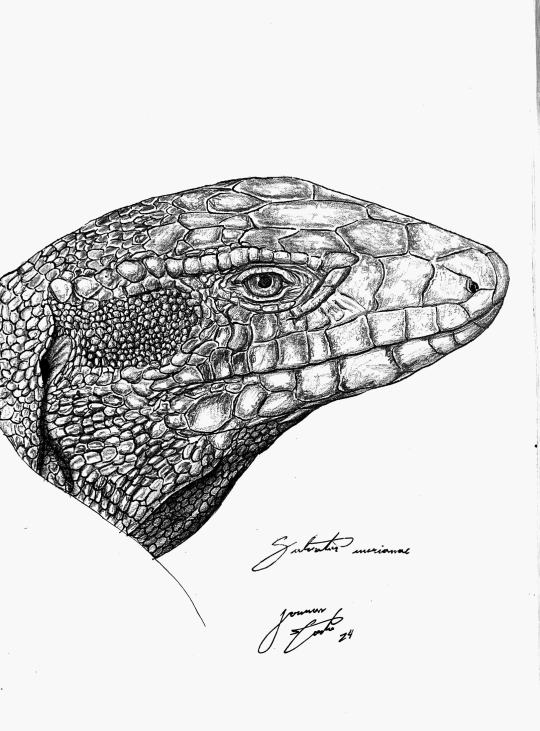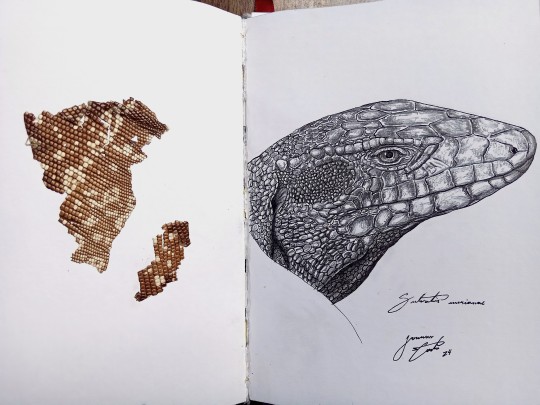#Salvator merianae
Text

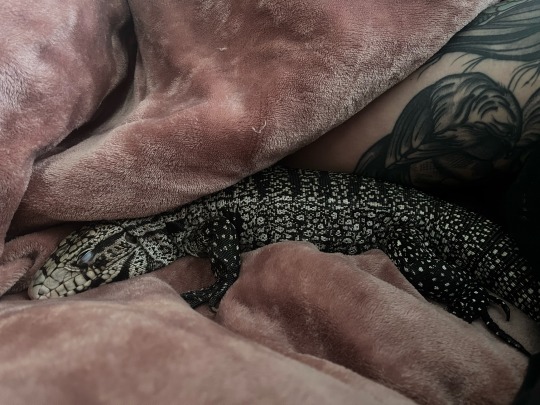
Cuddles with Clementine 🖤
#she’s not eating great lately and it worries me#she got an extra long time in the tub today#and now she’s napping like a lil angel#argentine tegu#Argentine black and white tegu#Clementine the Tegu 🥰#I freaking love her#Salvator merianae
4 notes
·
View notes
Note
not really having a good February... could you post some tegus maybe?? and do you have a favorite? I'm biased towards Argentine Black and whites because i have one but I love the Gold ones as well
You should definitely check out previously posted Tegus.
Herps and Birds (and More) (Posts tagged tegu) (tumblr.com)
For some reason, I think the coloration, I particularly like the Crocodile Tegu. Also, i really like aquatic/semi-aquatic lizards.

Crocodile Tegu (Crocodilurus amazonicus), family Teiidae, Peru
photograph by Matt Cage


photographs by Richard Bartlett

Common or Gold Tegu (Tupinambis teguixin), family Teiidae, northern South America
photograph via: https://carnivora.net/

Argentine Black and White Tegu (Salvator merianae), family Teiidae, found in western South America
photograph by Rafael Cuto
#tegu#tupinambis#salvator#crocodilurus#lizard#teiidae#reptile#herpetology#south america#animals#nature
166 notes
·
View notes
Photo
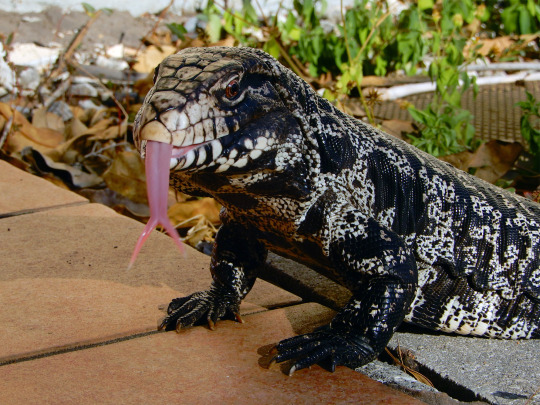
Older photo of my tegu who turns 10 this summer :)
Argentine Black & White Tegu (Salvator merianae)
21 notes
·
View notes
Note
heyo! what's kaiju's species? my campus has a bunch of tegus and they're Salvator merianae afaik

THAT'S A KAIJU!
Juju's S. merianae, too.
65 notes
·
View notes
Text
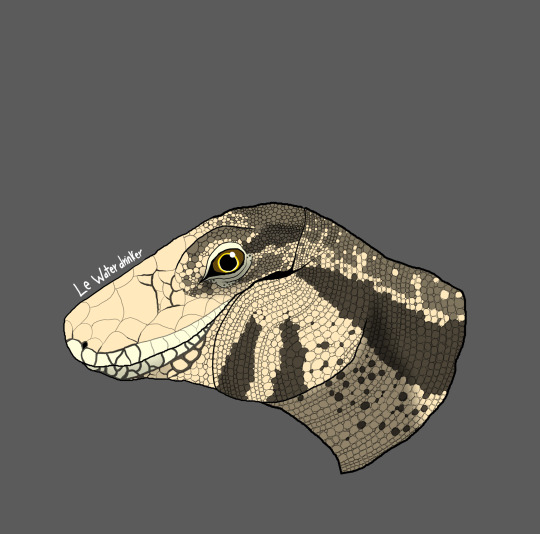
Argentine black and white tegu (Salvator merianae)
All finished. Still getting used to digital art so any tips would be great
0 notes
Text
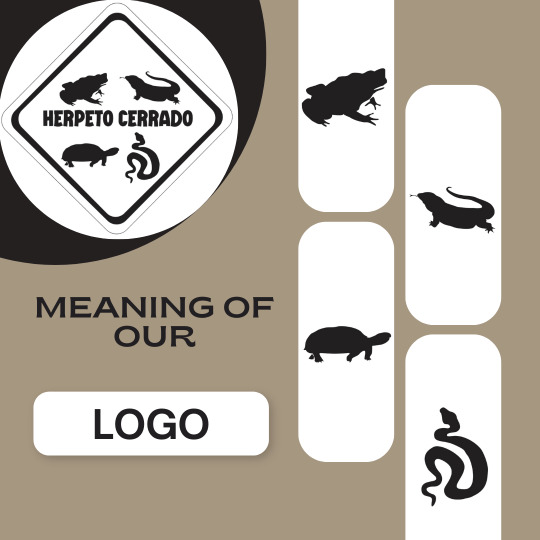


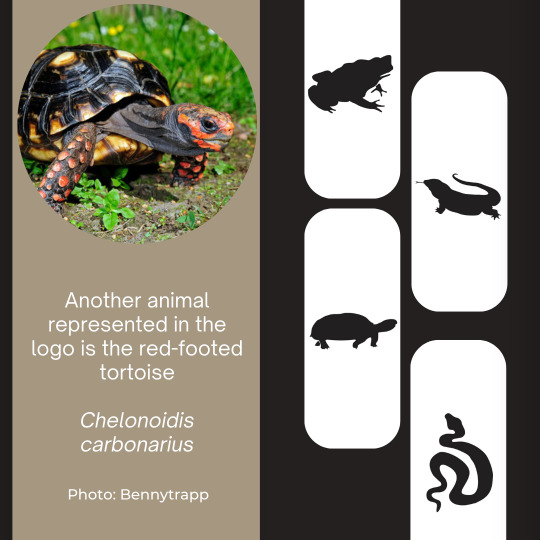
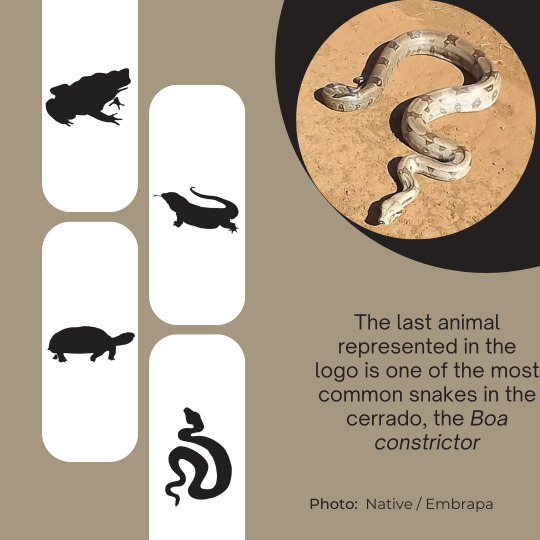


Herpeto Cerrado
The name emerged in 2005 from the combination of "Herpeto", a shortened version of Herpetology (Greek herpetón + gr lógos+ia - which could be translated as the science that studies crawling creatures), a branch of Zoology that studies reptiles and amphibians) and "Cerrado", also known as Brazilian Savanna, a biome with great biodiversity where the city of Uberlândia, the headquarters of our activities, is located.
In the logo, we have the silhouette of four animals studied by herpetology found in the region:
Rhinella diptycha, a toad commonly known as "cururu" or "sapo-boi";
Salvator merianae, a lizard commonly known as "teiú";
Chelonoidis carbonarius, a tortoise commonly known as "jabuti-piranga";
Boa constrictor, a common boa found in the Cerrado.
Our activities will focus on snakes, but occasionally (until partnerships are established), we will also publish about other groups of animals studied by herpetology. We will also publish about venomous animals, as it is a demand naturally created by the population.
The logo was created by our longtime partner @jimmyrus13, responsible for the page @o.qstudiun. Thank you very much for the excellent work, Jimmy!
#herpetocerrado#cerrado#serpentes#serpente#cobra#cobras#savanna#braziliansavanna#uberlandia#udi#snake#snakes#herpetology#herpetologylove#savethesnakes#reptiles#amphibians#wildlife#conservation#nature#animals#herps#biology#zoology#environment#biodiversity#education#research#science#ecology
0 notes
Photo

Lisbela, a teju (Salvator merianae), marcando presença na Aula de Ciências! @escolaestadualalminoafonso #biologia #biology #ciências #herpetologia #herpetology https://www.instagram.com/p/ClZBSH-OpuR/?igshid=NGJjMDIxMWI=
0 notes
Text
Black and White Tegu!
The black and white tegu is a large species of lizard originally from Argentina
They are the largest of the tegu species growing up to a max of 140cm
If you have read this far why not follow us @animalfacthub for daily animal facts and pics!
-

📷1: “Argentine Black and White Tegu (Salvator merianae) male - Flickr - berniedup.jpg” by Bernard DUPONT on Wikimedia Commons (CC BY-SA 2.0)
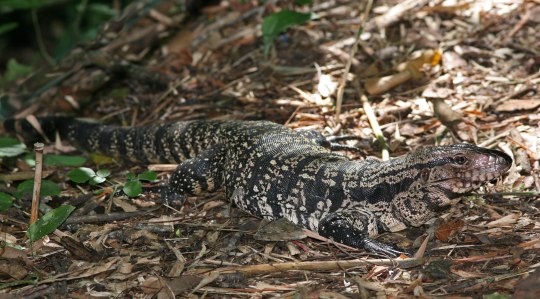
📷2: “Black and White Tegu.jpg” by Tomfriedel on Wikimedia Commons (CC BY-SA 3.0)
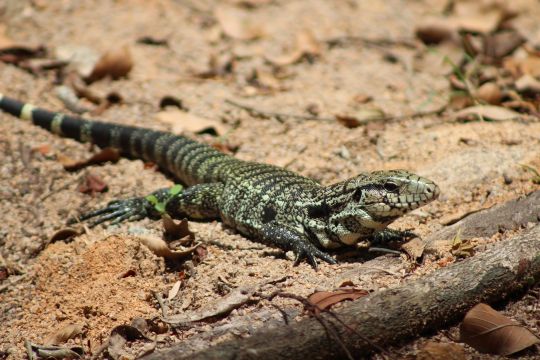
📷3: “Black and white tegu.JPG” by Patricia Carabelli on Wikimedia Commons (CC BY-SA 4.0)
0 notes
Text

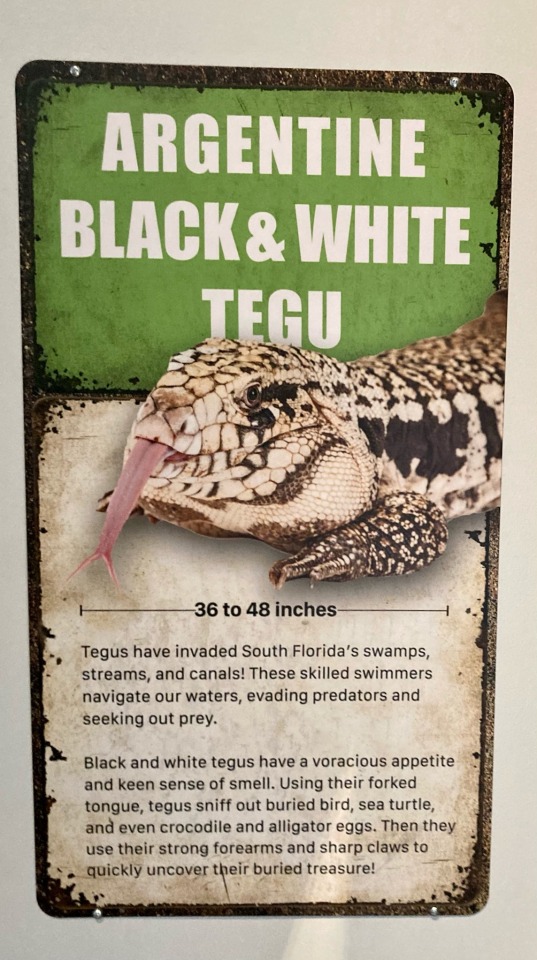
3/5/21
Argentine Black and White Tegu, Zoo Miami, Miami, Florida
Salvator merianae is an omnivorous species which inhabits the tropical rain forests, savannas, and semi-deserts of eastern and central South America. They are notable for their unusually high intelligence and can also be house-broken. A tegu can drop a section of its tail as a distraction if attacked. The tail is also used as a weapon to swipe at an aggressor; even a half-hearted swipe can leave a bruise. Tegus are capable of running at high speeds and can run bipedally for short distances. Males can grow up to 4.5 ft long and weigh up to 15.4 lbs. (x)
#Argentine black and white tegu#tegu#tegus#herptiblr#herpetology#Salvator merianae#this adventurous life#personal#adventure#explore#travel#explorer of the world#florida#miami#zoos#zooilogical park#miami zoo#zoo miami
3 notes
·
View notes
Photo
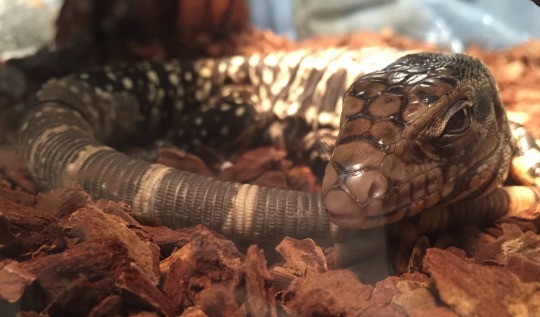
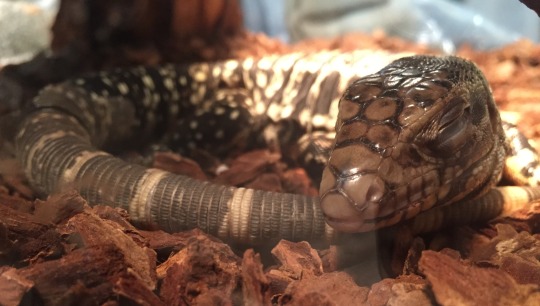
has there ever existed a cuter photoset? i think not <3
23 notes
·
View notes
Text

Argentine Black and White Tegu (Salvator merianae), family Teiidae, Brazil
This lizard usually grows to a total length of about 3 ft, but large specimens have been known to grow to 4.5 ft.
photograph by Leonardo Palermo Gentile
146 notes
·
View notes
Photo
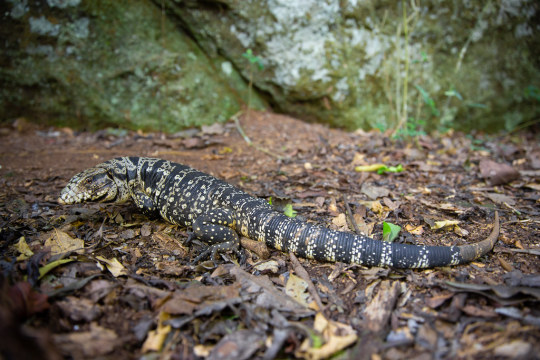
Argentine Black and White Tegu - Salvator merianae by Jono Dashper Wildlife Iguazu Falls, Misiones Province, Argentina Contact me on [email protected] for use of this image. https://flic.kr/p/2k5F2KP
1 note
·
View note
Text

Salvator merianae skull, ballpoint pen
0 notes
Note
Hey Tegu question, and feel free to just throw a link if you've already answered this one, but you've mentioned in the past that they have some kind of...Semi self thermoregulation? Like they're not full on warm blooded, but a similar system. How does that work?
nobody knows and it's baffling
https://agencia.fapesp.br/giant-tegu-lizard-is-warm-blooded-researchers-discover/22723/ (pretty good summary, though they get the genus wrong at least once- it's definitely Salvator merianae, not one of the Tupinambis species)
There is no reason that they should be able to do this
The fact that tegus are seasonally endothermic (warm-blooded for part of the year, the breeding season) is... I mean, it goes against everything we know about reptiles. Or have always assumed. I really, really want to see this study reproduced in other lizard species. Is this something we see in other taxa? How many other lizards can do this? Can other reptiles, like chelonians and crocodilians? As far as lizards go, teiids aren't a particularly basal or derived clade, but maybe is this something that other lizard taxa had and then lost, or something tegus evolved specifically? How does this work? (We really need to see if the other Salvator species can do it, as well as Tupinambis.)
In addition to having zero idea how they do it, we're not sure why they do it. There might be an argument for endothermy helping reproductive success because it takes a lot of energy for the females to make eggs... but the males can do it too, so that probably isn't it. Female pythons can generate heat by twitching their muscles while incubating eggs... but that's not what the tegus are doing.
This is really interesting evolutionarily because it may help answer the question of how endothermy came about in the first place. It may support the hypothesis that endothermy evolved according to a model of parental care. The hypothesis is that if parent animals could increase nest temperature or keep the nest temperature stable, that could lead to better outcomes for the babies.
https://www.science.org/doi/10.1126/sciadv.1500951
this is just one of many reasons why tegus are amazing, but by golly is it a doozy of a reason.
123 notes
·
View notes
Photo
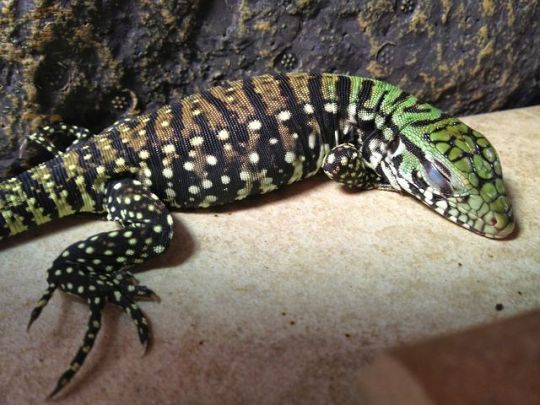
Baby Argentine Black and White Tegu
Salvator merianae
Source: Here
#baby#hatchling#argentine#black and white tegu#tegu#tegus#reptile#reptiles#lizard#lizards#animal#animals#pet#pets#nature
542 notes
·
View notes
